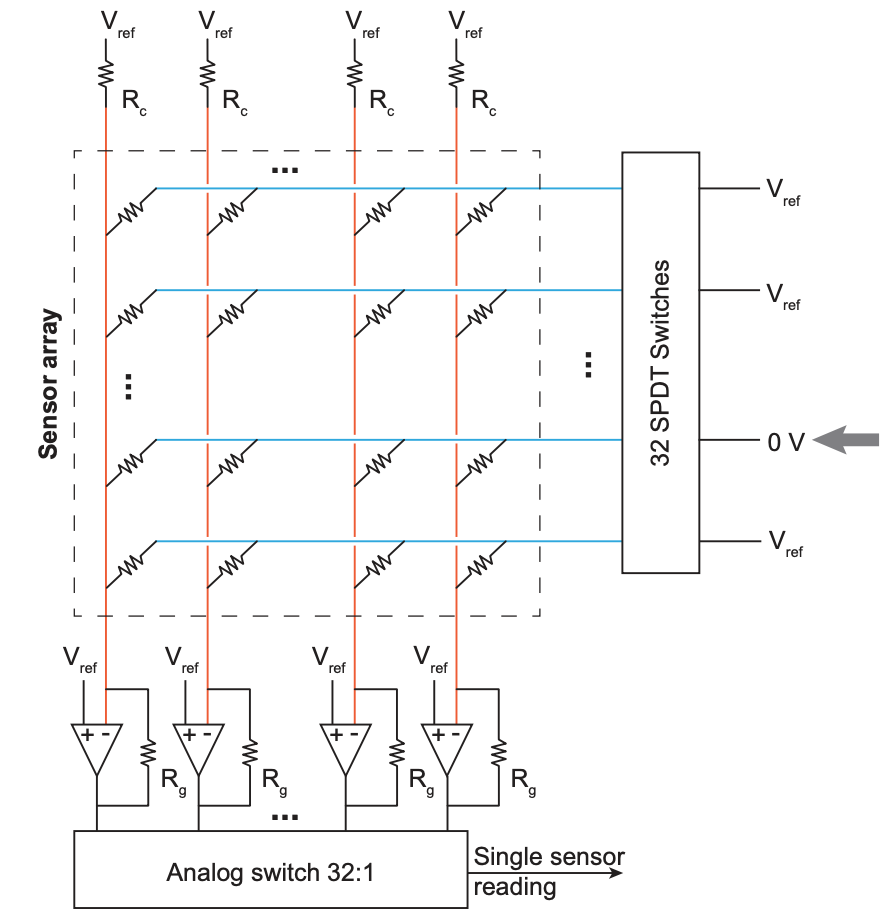I need to find the output at the amplifier in the first column. The row with the grey arrow indicates that we have switched to ground, from what was initially Vref. I thought I could treat it as a voltage divider with R_c and the row resistor as the terms.
It's a circuit from a research paper, but the equation is not provided.
So what is the single sensor reading? Which is essentially the voltage from the amplifier in column one and the second to last row... I'm really just trying to derive an equation wherein I can solve for the variable row resistor.

